Abstract
1. Extracts of Pseudomonas sp. grown on butane-2,3-diol oxidized glyoxylate to carbon dioxide, some of the glyoxylate being reduced to glycollate in the process. The oxidation of malate and isocitrate, but not the oxidation of pyruvate, can be coupled to the reduction of glyoxylate to glycollate by the extracts. 2. Extracts of cells grown on butane-2,3-diol decarboxylated oxaloacetate to pyruvate, which was then converted aerobically or anaerobically into lactate, acetyl-coenzyme A and carbon dioxide. The extracts could also convert pyruvate into alanine. However, pyruvate is not an intermediate in the metabolism of glyoxylate since no lactate or alanine could be detected in the reaction products and no labelled pyruvate could be obtained when extracts were incubated with [1-14C]glyoxylate. 3. The 14C was incorporated from [1-14C]glyoxylate by cell-free extracts into carbon dioxide, glycollate, glycine, glutamate and, in trace amounts, into malate, isocitrate and α-oxoglutarate. The 14C was initially incorporated into isocitrate at the same rate as into glycine. 4. The rate of glyoxylate utilization was increased by the addition of succinate, α-oxoglutarate or citrate, and in each case α-oxoglutarate became labelled. 5. The results are consistent with the suggestion that the carbon dioxide arises by the oxidation of glyoxylate via reactions catalysed respectively by isocitratase, isocitrate dehydrogenase and α-oxoglutarate dehydrogenase.
Full text
PDF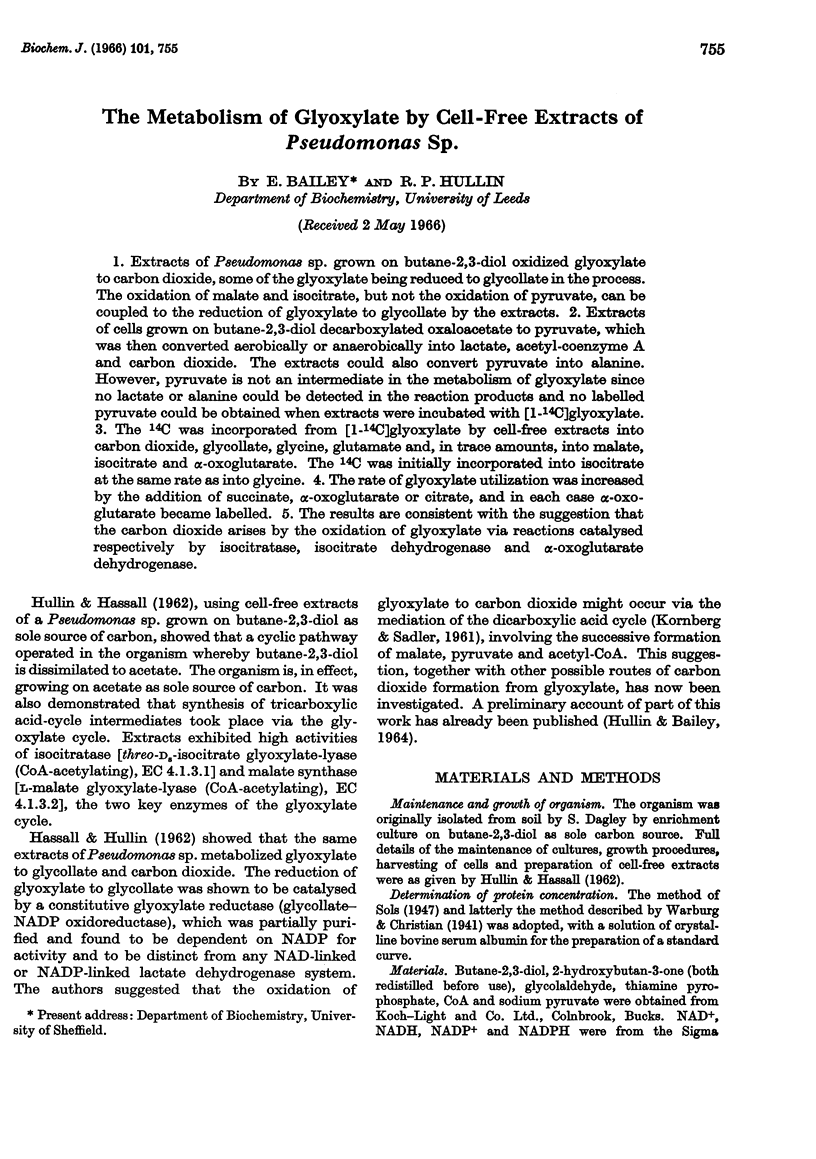
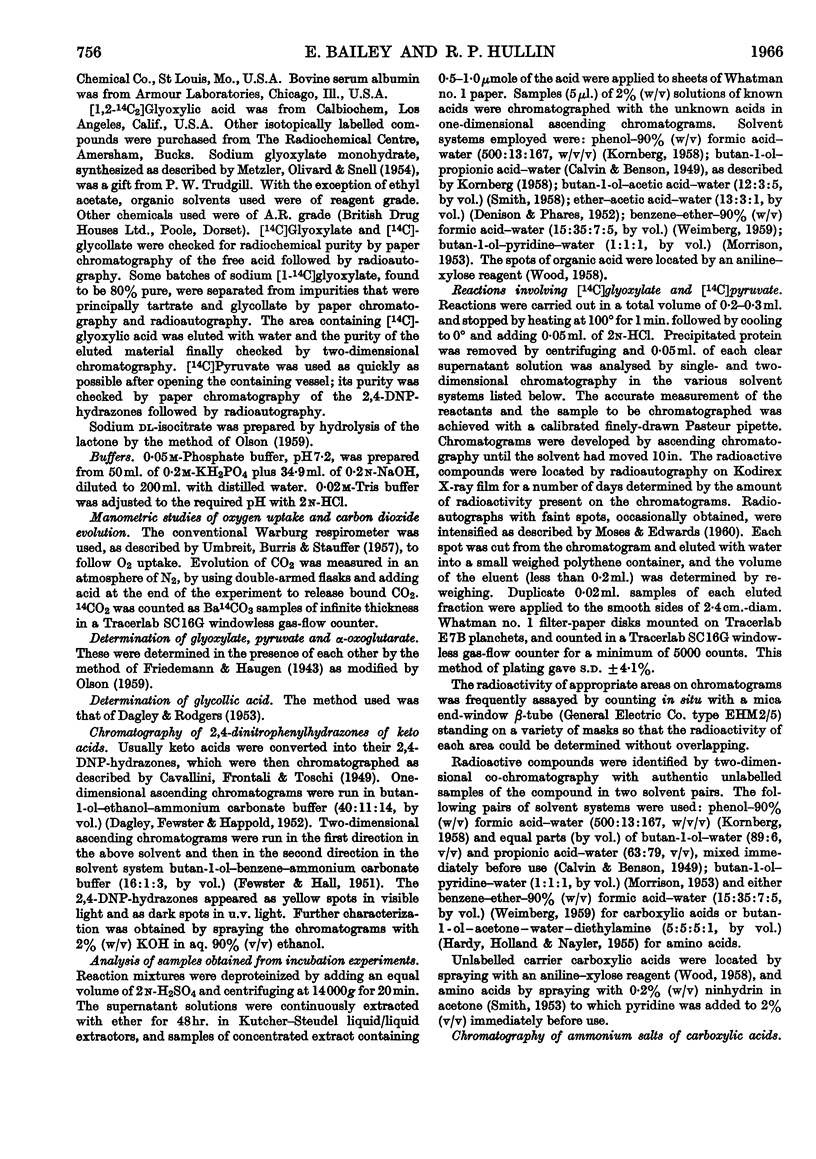
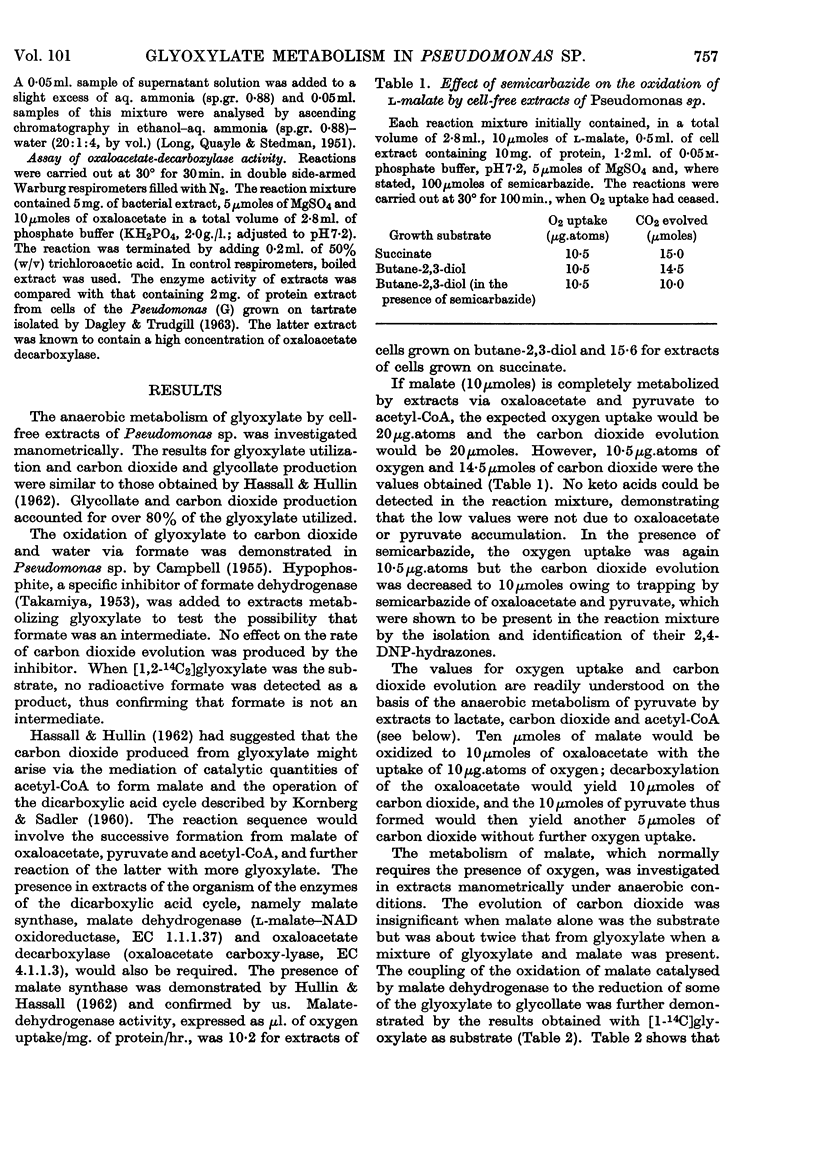
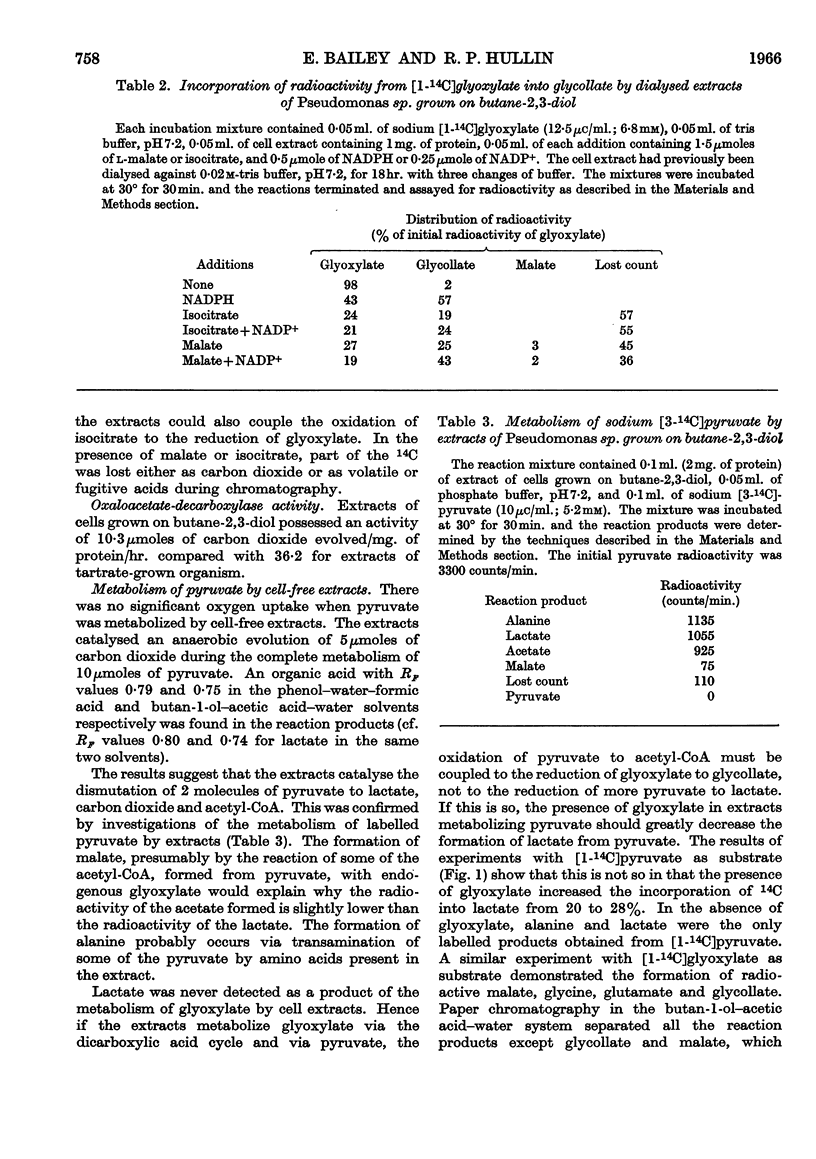

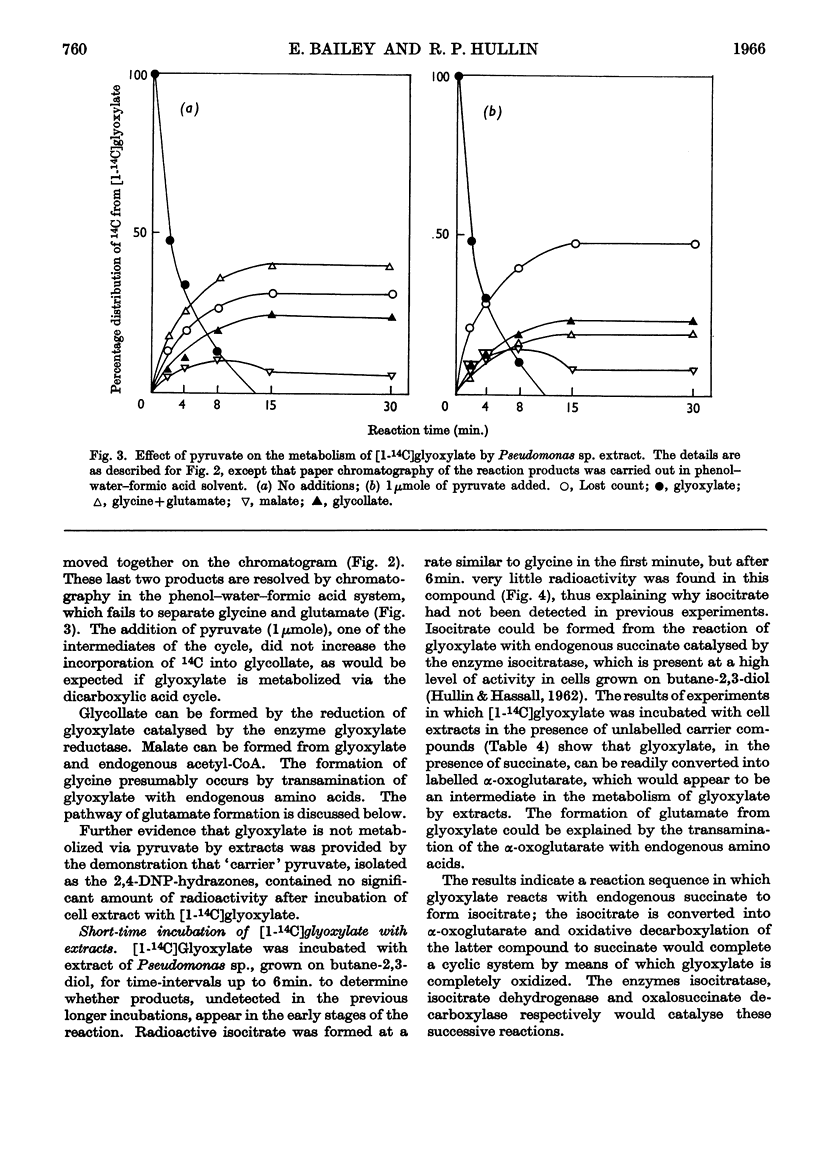
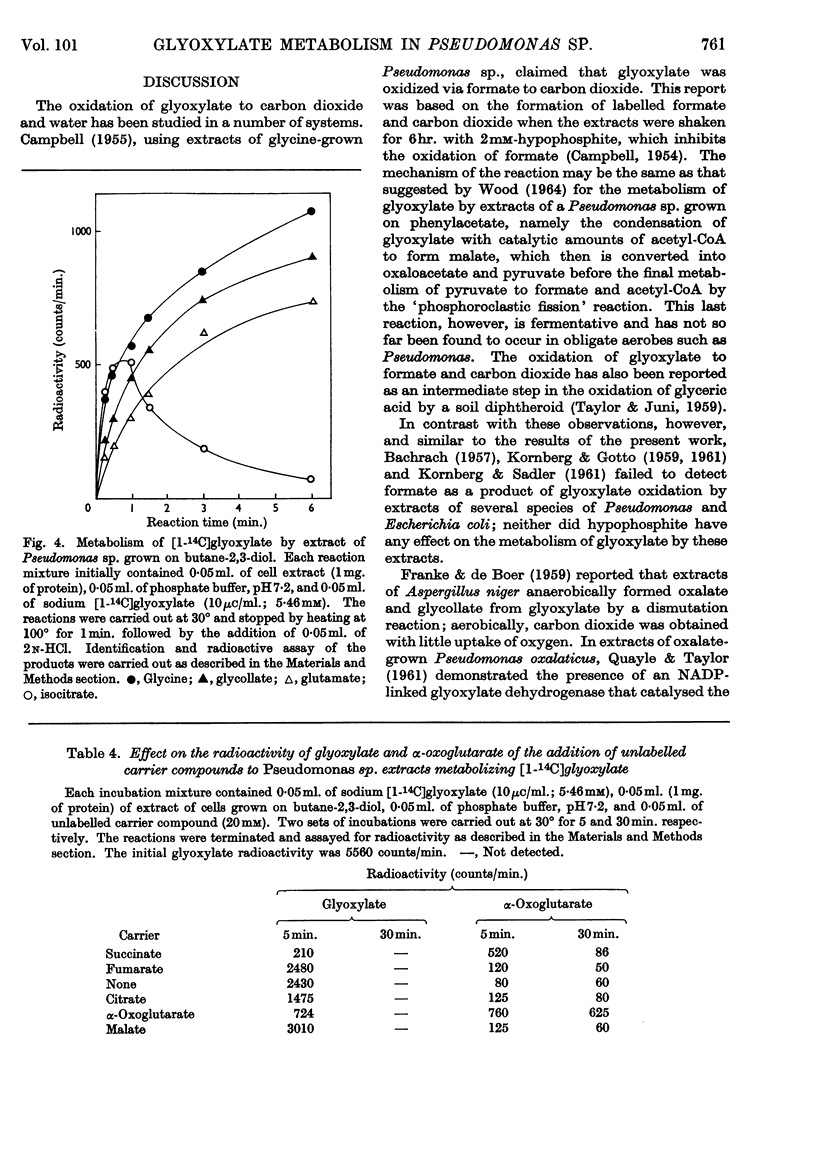
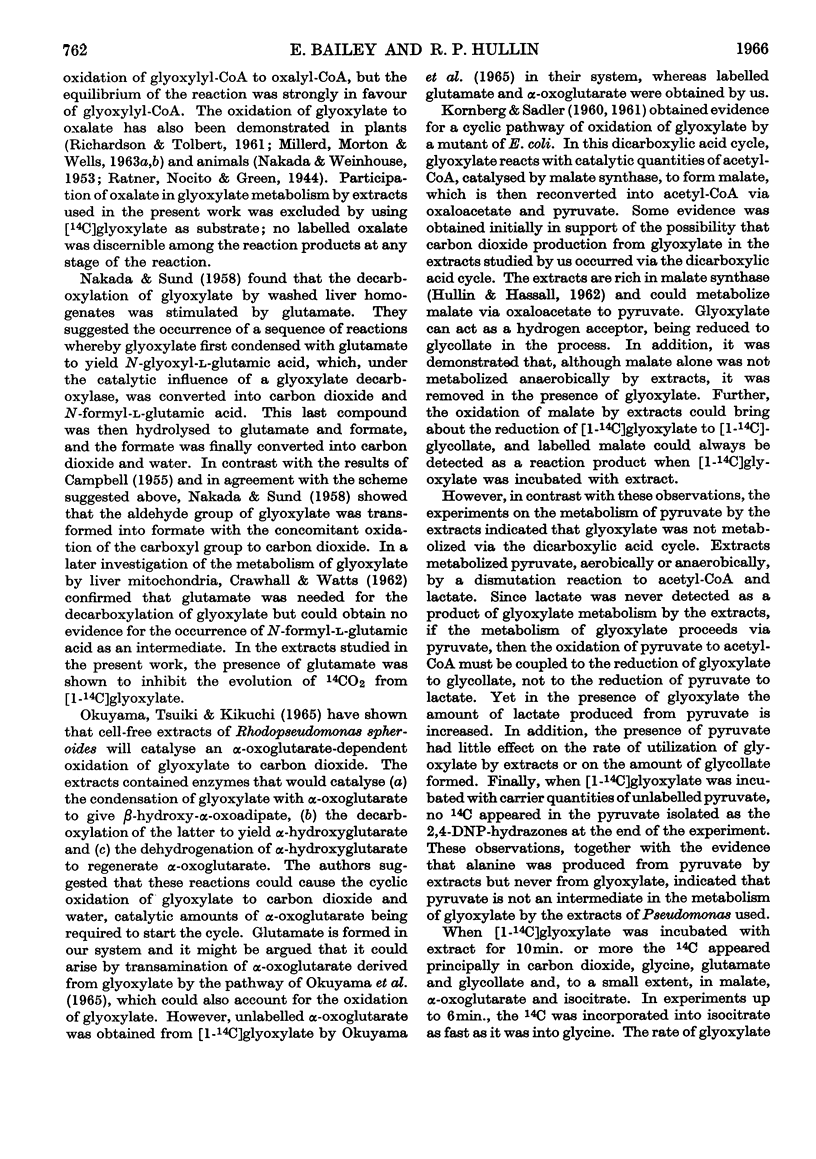
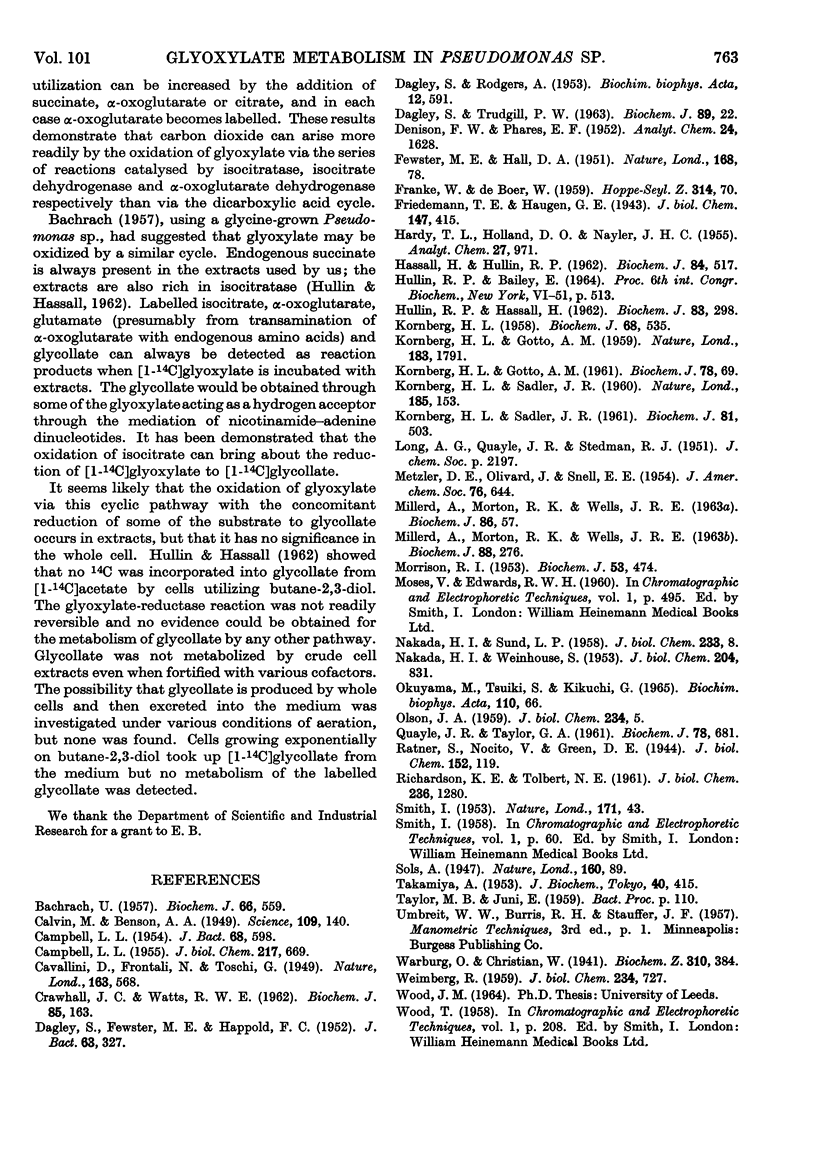
Selected References
These references are in PubMed. This may not be the complete list of references from this article.
- BACHRACH U. The degradation of glycine by Pseudomonas aeruginosa. Biochem J. 1957 Aug;66(4):559–561. doi: 10.1042/bj0660559. [DOI] [PMC free article] [PubMed] [Google Scholar]
- CAMPBELL L. L., Jr The mechanism of allantoin degradation by a Pseudomonas. J Bacteriol. 1954 Nov;68(5):598–603. doi: 10.1128/jb.68.5.598-603.1954. [DOI] [PMC free article] [PubMed] [Google Scholar]
- CAMPBELL L. L., Jr The oxidative degradation of glycine by a Pseudomonas. J Biol Chem. 1955 Dec;217(2):669–673. [PubMed] [Google Scholar]
- Calvin M., Benson A. A. The Path of Carbon in Photosynthesis IV: The Identity and Sequence of the Intermediates in Sucrose Synthesis. Science. 1949 Feb 11;109(2824):140–142. doi: 10.1126/science.109.2824.140. [DOI] [PubMed] [Google Scholar]
- Crawhall J. C., Watts R. W. The metabolism of glyoxylate by human- and rat-liver mitochondria. Biochem J. 1962 Oct;85(1):163–171. doi: 10.1042/bj0850163. [DOI] [PMC free article] [PubMed] [Google Scholar]
- DAGLEY S., FEWSTER E., HAPPOLD F. C. The bacterial oxidation of phenylacetic acid. J Bacteriol. 1952 Mar;63(3):327–336. doi: 10.1128/jb.63.3.327-336.1952. [DOI] [PMC free article] [PubMed] [Google Scholar]
- DAGLEY S., RODGERS A. Estimation of glycollic acid. Biochim Biophys Acta. 1953 Dec;12(4):591–591. doi: 10.1016/0006-3002(53)90196-6. [DOI] [PubMed] [Google Scholar]
- DAGLEY S., TRUDGILL P. W. THE METABOLISM OF TARTARIC ACID BY A PSEUDOMONAS. A NEW PATHWAY. Biochem J. 1963 Oct;89:22–31. doi: 10.1042/bj0890022. [DOI] [PMC free article] [PubMed] [Google Scholar]
- FEWSTER M. E., HALL D. A. Application of buffered solvent systems to the detection of aromatic acids by paper partition chromatography. Nature. 1951 Jul 14;168(4263):78–79. doi: 10.1038/168078a0. [DOI] [PubMed] [Google Scholar]
- HASSALL H., HULLIN R. P. Some properties of glyoxylate reductase in cell extracts of Pseudomonas sp. Biochem J. 1962 Sep;84:517–524. doi: 10.1042/bj0840517. [DOI] [PMC free article] [PubMed] [Google Scholar]
- HULLIN R. P., HASSALL H. The synthesis of cell constituents from butane-2,3-diol by Pseudomonas sp. Biochem J. 1962 May;83:298–303. doi: 10.1042/bj0830298. [DOI] [PMC free article] [PubMed] [Google Scholar]
- KORNBERG H. L., GOTTO A. M. Formation of malate from glycollate by Pseudomonas ovalis Chester. Nature. 1959 Jun 27;183:1791–1793. doi: 10.1038/1831791a0. [DOI] [PubMed] [Google Scholar]
- KORNBERG H. L., GOTTO A. M. The metabolism of C2 compounds in micro-organisms. 6. Synthesis of cell constituents from glycollate by Pseudomonas sp. Biochem J. 1961 Jan;78:69–82. doi: 10.1042/bj0780069. [DOI] [PMC free article] [PubMed] [Google Scholar]
- KORNBERG H. L., SADLER J. R. Microbial oxidation of glycollate via a dicarboxylic acid cycle. Nature. 1960 Jan 16;185:153–155. doi: 10.1038/185153a0. [DOI] [PubMed] [Google Scholar]
- KORNBERG H. L., SADLER J. R. The metabolism of C2-compounds in micro-organisms. VIII. A dicarboxylic acid cycle as a route for the oxidation of glycollate by Escherichia coli. Biochem J. 1961 Dec;81:503–513. doi: 10.1042/bj0810503. [DOI] [PMC free article] [PubMed] [Google Scholar]
- KORNBERG H. L. The metabolism of C2 compounds in micro-organisms. I. The incorporation of [2-14C] acetate by Pseudomonas fluorescens, and by a Corynebacterium, grown on ammonium acetate. Biochem J. 1958 Mar;68(3):535–542. doi: 10.1042/bj0680535. [DOI] [PMC free article] [PubMed] [Google Scholar]
- MORRISON R. I. The isolation of L-pipecolinic acid from Trifolium repens. Biochem J. 1953 Feb;53(3):474–478. doi: 10.1042/bj0530474. [DOI] [PMC free article] [PubMed] [Google Scholar]
- Millerd A., Morton R. K., Wells J. R. Oxalic acid synthesis in shoots of Oxalis pes-caprae (L.). Biochem J. 1963 Jan;86(1):57–62. doi: 10.1042/bj0860057. [DOI] [PMC free article] [PubMed] [Google Scholar]
- Millerd A., Morton R. K., Wells J. R. Oxalic acid synthesis in shoots of Oxalis pes-caprae. The precursors of glycollic acid and glyoxylic acid. Biochem J. 1963 Aug;88(2):276–281. doi: 10.1042/bj0880276. [DOI] [PMC free article] [PubMed] [Google Scholar]
- NAKADA H. I., SUND L. P. Glyoxylic acid oxidation by rat liver. J Biol Chem. 1958 Jul;233(1):8–13. [PubMed] [Google Scholar]
- NAKADA H. I., WEINHOUSE S. Non-enzymatic transamination with glyoxylic acid and various amino acids. J Biol Chem. 1953 Oct;204(2):831–836. [PubMed] [Google Scholar]
- OLSON J. A. The purification and properties of yeast isocitric lyase. J Biol Chem. 1959 Jan;234(1):5–10. [PubMed] [Google Scholar]
- RICHARDSON K. E., TOLBERT N. E. Oxidation of glyoxylic acid to oxalic acid by glycolic acid oxidase. J Biol Chem. 1961 May;236:1280–1284. [PubMed] [Google Scholar]
- SMITH I. Colour reactions on paper chromatograms by a dipping technique. Nature. 1953 Jan 3;171(4340):43–44. doi: 10.1038/171043a0. [DOI] [PubMed] [Google Scholar]
- WEIMBERG R. L-2-Keto-4,5-dihydroxyvaleric acid: an intermediate in the oxidation of L-arabinose by Pseudomonas saccharophila. J Biol Chem. 1959 Apr;234(4):727–732. [PubMed] [Google Scholar]


